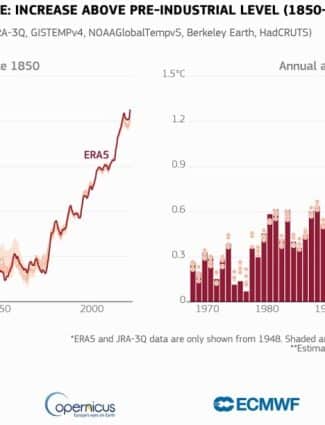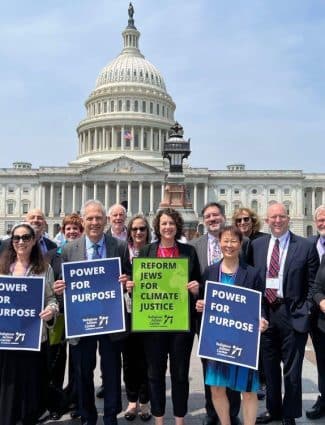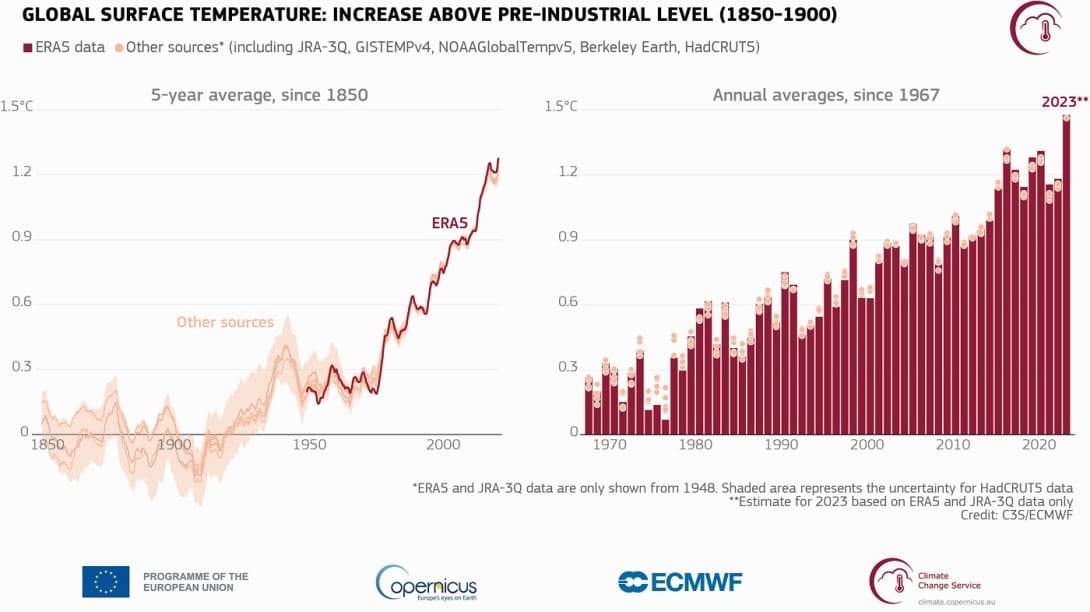
2023 Was Very Hot – 1.48°C (2.66°F) Warmer!
Join Me in Being a Better Steward of Our Home!
Estimated reading time: 2 minutes, 17 secondsAn analysis by the Copernicus European Centre for Medium-Range Weather Forecasts recently concluded that 2023 recorded the highest global average temperature in the temperature data records from 1850.
- The temperature averaged 14.98°C, 0.17°C higher than the highest annual value recorded in 2016.
- Notably, global temperatures in 2023 were 1.48°C (2.66°F) warmer than the preindustrial level of 1850-1900, close to the desired 1.5°C (2.7°F) limit set by the Paris Climate Accords.
- This data indicates that global warming has become an alarming issue, and we must take necessary measures to combat it.
- July and August of 2023 were the warmest two months ever recorded.
- Furthermore, in November of the same year, temperatures were observed for two days, more than two (2°C or 3.6°F), more than the level observed between 1850 and 1900, which was a first.
- Additionally, each month from June to December 2023 was warmer than the corresponding month in any previous year, indicating a consistent trend of rising temperatures.
“I don’t think anybody was expecting anomalies as large as we have seen,” Copernicus director Carlo Buontempo said. “It was on the edge of what was plausible.”
In Katherine Hayhoe’s Talking Climate newsletter, she first reported that 2023 was the hottest year since human record-keeping began. While the best time to take action was yesterday, there is still time. Ms. Hayhoe has come up with three actionable ideas for you. Why not try one, two, or even all three of them? Then, please share your experience with others and encourage them to join in climate action.
One of her friends, a health expert named Ed Maibach, suggested that she talk more frequently with her family, friends, neighbors, and co-workers about our support for climate solutions such as clean energy and clean transportation. He said doing so would benefit her, those around her, and the environment.
Let’s take action towards a better future. Our planet is our only home, and we must become better stewards. Though we may be unable to undo the damage, we can still ensure a healthier planet for future generations. This responsibility lies with all of us, regardless of our faith. There is no Planet B, so let’s work together as guardians of our planet and create a brighter future for all.
The Jan Lilien Education Fund sponsors ongoing sustainability and environmental awareness programs. Regarding gifts made this month, I will match dollar for dollar. All donations are tax-deductible.
I receive a commission when you buy a book or product using a link on this page. Thank you for supporting Sharing Jan’s Love blog.

Sultry Nights and Magnolia Trees: New York City Is Now Subtropical
Join Me in Being a Better Steward of Our Home!
Estimated reading time: 2 minutes, 17 secondsLisa M. Collins, on July 24, 2020, wrote “Sultry Nights and Magnolia Trees: New York City Is Now Subtropical” in The New York Times.
“New York City, after years of being considered a humid continental climate, it now sits within the humid subtropical climate zone. The classification requires that summers average above 72 degrees Fahrenheit — which New York’s have had since 1927 — and for winter months to stay above 27 degrees Fahrenheit, on average. Despite the occasional cold snap, the city has met that requirement for five years (as of 2020). And the winters are only getting warmer.”
Time to Take Action On Climate Change
Join Me in Being a Better Steward of Our Home!
Estimated reading time: 2 minutes, 17 seconds











